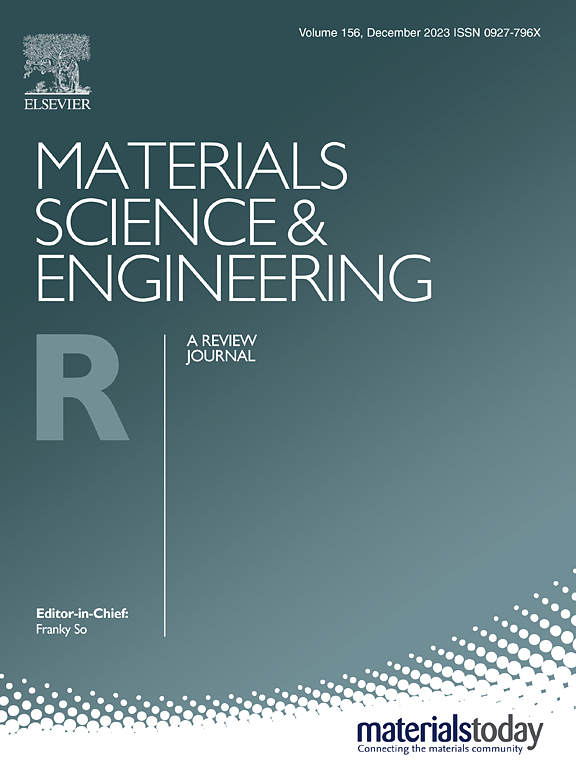Advances in two-dimensional layered materials for gas sensing
IF 31.6
1区 材料科学
Q1 MATERIALS SCIENCE, MULTIDISCIPLINARY
引用次数: 0
Abstract
The emergence of two-dimensional (2D) layered materials with unique physiochemical properties and structure versatility has significantly boosted the development of gas sensing technology. This review paper explores recent advances in utilizing 2D materials, such as graphene, transition metal dichalcogenides (TMDs), black phosphorus, hexagonal boron nitride (h-BN), g-C3N4, MXenes, metal-organic frameworks (MOFs), and covalent organic frameworks (COFs), for field-effect transistor (FET) and chemiresistive gas sensors. In addition to the unique properties contributing to the sensing performance, the key aspects of synthesis methods, sensing mechanisms, and sensing performance of 2D materials are systematically elaborated. Furthermore, the review highlights recent progress in performance optimization through material functionalization, heterostructure design, and material systems hybridization. Potential solutions to the key challenges, including scalability, reproducibility, selectivity, and environmental stability, are addressed to unlock the full potential of 2D materials in gas-sensing applications. By comprehensively compiling state-of-the-art developments in 2D layered materials for gas sensing, this review provides critical insights into the evolving landscape of sensor technologies and inspires new strategies for addressing critical environmental and industrial challenges.
用于气体传感的二维层状材料的研究进展
具有独特理化特性和结构多样性的二维(2D)层状材料的出现极大地推动了气体传感技术的发展。本综述论文探讨了利用二维材料(如石墨烯、过渡金属二钙化层(TMDs)、黑磷、六方氮化硼(h-BN)、g-C3N4、MXenes、金属有机框架(MOFs)和共价有机框架(COFs))制造场效应晶体管(FET)和化学电阻式气体传感器的最新进展。除了有助于提高传感性能的独特性质外,还系统地阐述了二维材料的合成方法、传感机理和传感性能等关键方面。此外,综述还重点介绍了通过材料功能化、异质结构设计和材料系统杂化实现性能优化的最新进展。针对关键挑战(包括可扩展性、可重复性、选择性和环境稳定性)提出了潜在的解决方案,以充分释放二维材料在气体传感应用中的潜力。本综述全面梳理了用于气体传感的二维层状材料的最新发展,为不断发展的传感技术提供了重要的见解,并为应对关键的环境和工业挑战提供了新的战略启发。
本文章由计算机程序翻译,如有差异,请以英文原文为准。
求助全文
约1分钟内获得全文
求助全文
来源期刊

Materials Science and Engineering: R: Reports
工程技术-材料科学:综合
CiteScore
60.50
自引率
0.30%
发文量
19
审稿时长
34 days
期刊介绍:
Materials Science & Engineering R: Reports is a journal that covers a wide range of topics in the field of materials science and engineering. It publishes both experimental and theoretical research papers, providing background information and critical assessments on various topics. The journal aims to publish high-quality and novel research papers and reviews.
The subject areas covered by the journal include Materials Science (General), Electronic Materials, Optical Materials, and Magnetic Materials. In addition to regular issues, the journal also publishes special issues on key themes in the field of materials science, including Energy Materials, Materials for Health, Materials Discovery, Innovation for High Value Manufacturing, and Sustainable Materials development.
 求助内容:
求助内容: 应助结果提醒方式:
应助结果提醒方式:


